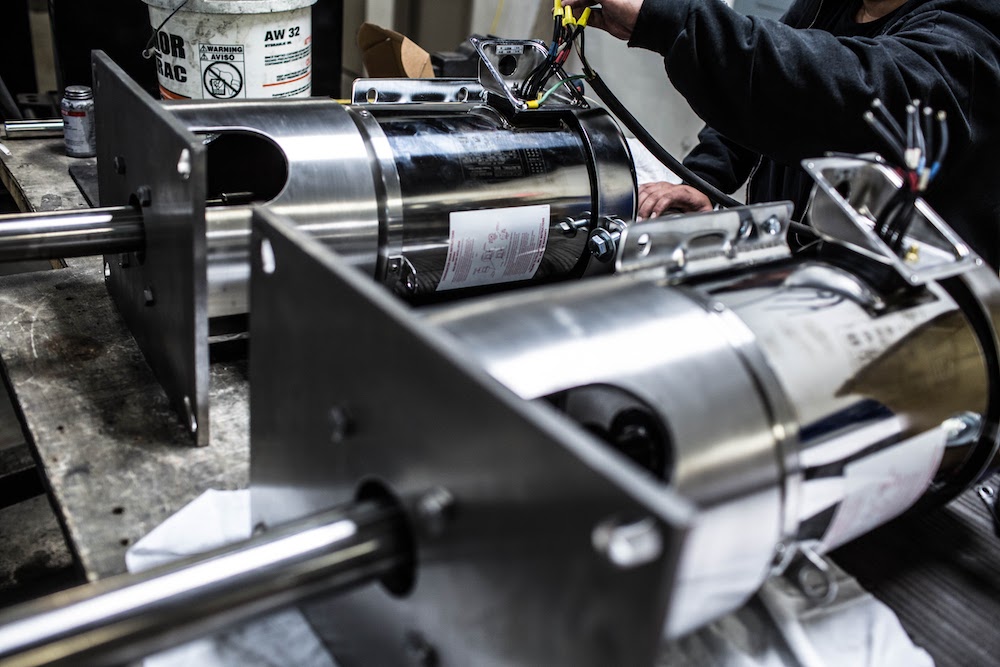How Does Liquid Viscosity Work?
What Is Viscosity? Viscosity is essentially a numerical value that can explain a fluid’s resistance to flow. It’s sort of like how much friction...

Viscosity is just one example of the engineering terms that applies to many other types of jobs, and is evident in everyday life. By definition, viscosity is-“quantity that describes a fluid's resistance to flow”, and explained in more detail “…fluids resist the relative motion of immersed objects through them as well as to the motion of layers with differing velocities within them…”.
Since even the most straightforward definitions of viscosity contain terminology and concepts that might not be easily understood by a novice, it would be more efficient to describe it with a practical example- in this instance, a person is holding a disposable cup with a hole in the bottom of it. He proceeds to fill the cup with a particularly thick syrup. As one might expect, the rate by which the syrup will flow out of the hole at the bottom of the cup will be rather slow. Later, he fills an identical cup with water; and observes that the water takes much less time to flow out from the cup than the syrup. This example demonstrates that a substance with greater viscosity (the syrup) requires more energy to flow than a thinner liquid (the water). Viscosity is described by the internal friction of a moving liquid. Substances with greater viscosity produce a much more significant amount of friction as compared to others that are lower on the scale of viscosity. Liquids are not necessarily the only types of matter that possess viscosity- gasses do as well, although it is usually much less noticeable to the naked eye.
It is quite likely that Sir Isaac Newton was the man that originally discovered this formula- viscosity = shear stress / shear rate. Shear stress is the force per unit area required to move one layer of fluid in relation to another. Shear rate is the measure of the change in speed at which intermediate layers move with respect to one another. The unit of measurement used is the centipoise (cP), which is the equivalent of 1 mPa s (millipascal second). Newton proposed that if a substance was kept at a particular temperature and shear stress, that the viscosity of the fluid in question would remain the same; regardless of any changes in the shear rate. His theory was correct in some cases- there are liquids that exist like that- but they are vastly outnumbered by those that do not adhere to the Newton’s principle. The ones that really are as Newton thought are called Newtonian fluids. As one might assume, the rest of the fluids that don’t fall into that classification are described as non-Newtonian fluids.
There are two subtypes of viscosity. The first is dynamic viscosity, also known as shear viscosity. Dynamic viscosity is measured by a fluid’s resistance to shearing flows, in which adjoining layers move parallel to one another, but at differing rates of speed. A practical example is expressed by a concept known as the Couette flow. This occurs when a liquid is sandwiched between two plates, placed on a horizontal level. One of the plates is moving at a constant speed, the other is fixed in its position.
Under the condition that the top plate (the one in motion) is moving at an adequately slow and steady rate, the layer of liquid directly beneath the top plate will flow along with it. Meanwhile, the layer of liquid that is in contact to the bottom plate (the stationary one) will not move; at least not as quickly as the layers above it. The essential conclusion from this experiment is that the top layer of the liquid will move at a greater rate of speed than the ones beneath it- conversely, going from the bottom to the top, each layer will move at a higher rate than the one beneath it.
 The second subtype- kinematic viscosity- is the ratio of dynamic viscosity to the density. It can be determined by dividing the absolute viscosity by the fluid mass density. Each type has its own applications. Dynamic velocity is useful for establishing the interactions between molecules, and how they relate to mechanical stress; while kinematic viscosity is concerned with the motion of a liquid and the field of velocity.
The second subtype- kinematic viscosity- is the ratio of dynamic viscosity to the density. It can be determined by dividing the absolute viscosity by the fluid mass density. Each type has its own applications. Dynamic velocity is useful for establishing the interactions between molecules, and how they relate to mechanical stress; while kinematic viscosity is concerned with the motion of a liquid and the field of velocity.
So why is viscosity so important? It is something that must be taken into the equation and consideration in a spectrum of jobs across different industries. Food manufacturers measure viscosity to make their process more efficient and cost effective. The specifications of their equipment must be designed in such a way that the pipes are an adequate size, providing the proper amount of pressure; and gauging the length of time required for a product to set or dry before it is packaged and sold. Additionally, it affects the food’s texture. It is necessary to ensure that the substance is of a certain viscosity in order to produce the item properly and on a consistent basis. The design of a gas pipeline also requires a precise measurement of viscosity to obtain an accurate projection of the flow of lubricating oils, as well as other elements of the structure. It is relevant to how the mixture will pumped, and how it will level out when it settles. Even cosmetics companies are unlikely to sell a product without determining the viscosity of the item, as they must adjust it and alter the formula in order to suit the purpose.
The mathematical formulas and the advanced concepts of viscosity may appear to be intimidating and mind-boggling to a person that has only a limited education focused on chemistry and engineering. In reality, it is not simple; there can be a staggering number of different figures and variables, all of which must be unflinchingly precise. But a basic understanding of what the word “viscosity” means and how it pertains to the task at hand is of the utmost importance, as it is pertinent to such a sizeable percentage of people in many different occupations and walks of life.

What Is Viscosity? Viscosity is essentially a numerical value that can explain a fluid’s resistance to flow. It’s sort of like how much friction...

As you start looking at all your options for industrial mixers, you could run into some terminology that may be unfamiliar. Or, in some cases, you...

What is Low Shear Mixing? You have probably utilized low shear mixing and didn't even realize it. According to recent coffee statistics, half of...